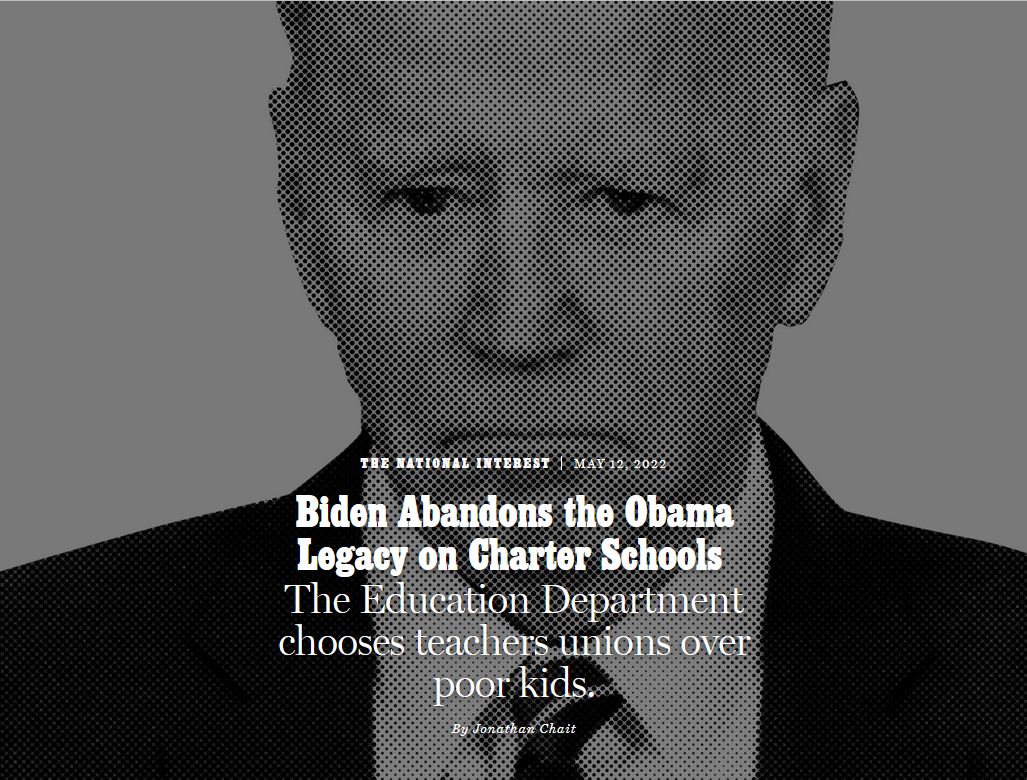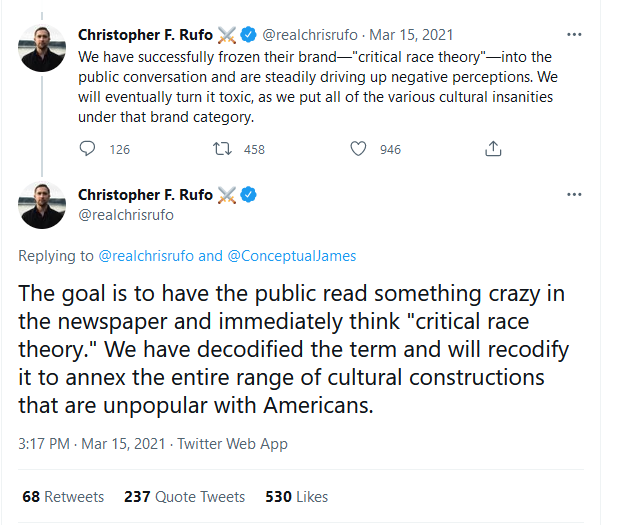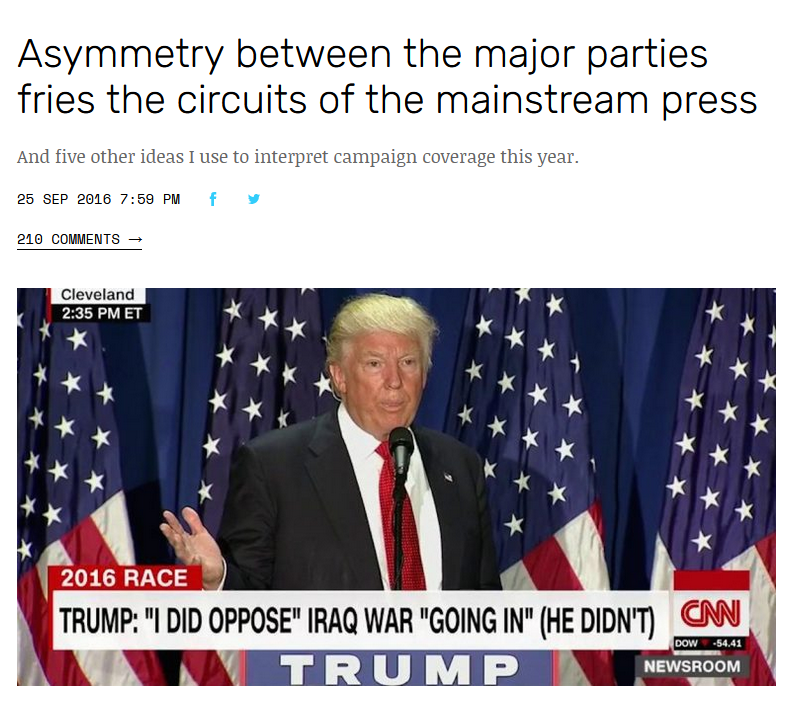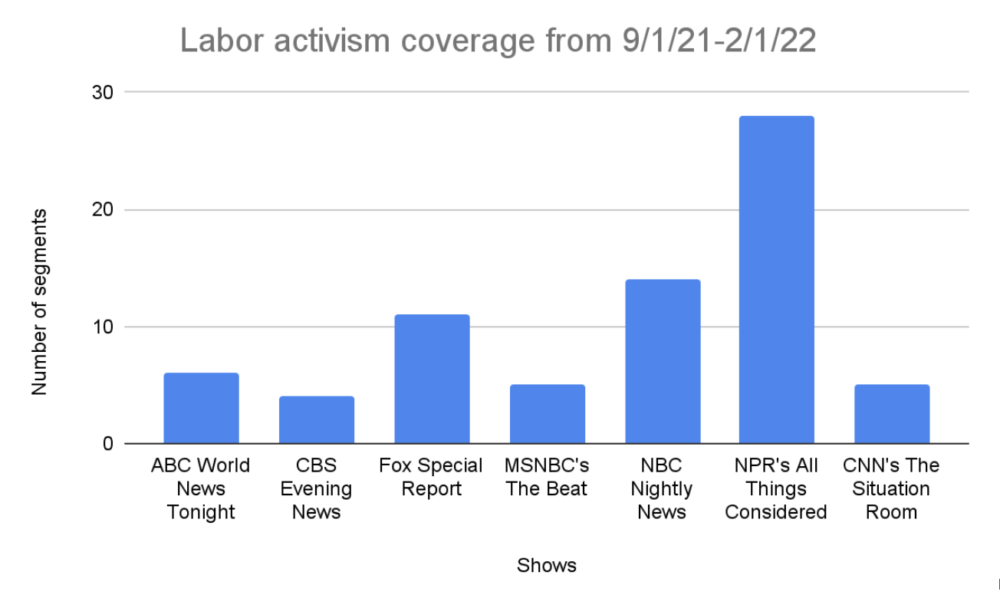The May 27, 2022, episode of CounterSpin was a special on gun violence, featuring archival interviews with Igor Volsky and Pat Elder (originally aired March 26, 2021, and February 23, 2018). This is a lightly edited transcript.

CBS (5/26/22)
Janine Jackson: CBS News‘ website featured a story about the “grim task” of planning funerals for 19 children—shot dead, along with two teachers, in a Texas elementary school on May 24—right next to a story about Oklahoma’s governor signing the country’s strictest abortion ban, the prominent sign behind him declaring “life is a human right.”
Welcome, as they say, to America—where these ideas are presented as somehow of a piece, where news media tell us day after day how exceptionally good and worthy we are, the world’s policeman and a global beacon for human rights and the good life.
Meanwhile, the rest of the world looks on in horror. BBC‘s North America editor explained to its audience that there is no expectation of anything being done to prevent things like the latest (as far as I know, as we record on May 26) mass murder in the US, because “the argument over guns has simply become too politically divisive and culturally entrenched to allow for meaningful change.”
Reporter Eoin Higgins interviewed teachers around the country who reported the psychological toll of not only actual shootings, but constant drills and lockdowns on children, who they said, “have largely given up on a better future.” Teachers, meanwhile, feel expendable and unvalued; it’s hardly lost on them that the same forces accusing them of poisoning children with curricula are also demanding that they step between those children and a bullet.
That powers that be in this country have responded to school shootings not by toughening gun laws, but by loosening them, and responded to the failure of law enforcement to prevent such shootings by calling for more law enforcement, it’s a demoralizing combination of devastating and unsurprising. As a response to violence, we try violence, time after time.

The Hill (5/26/22)
There doesn’t seem to be anything new to say right now about gun violence in the US. But that doesn’t mean we shouldn’t keep saying the things we know—more loudly, more unapologetically and in more places.
As we record, we hear that students at schools across the country are walking out in an effort to say simply, “We refuse to go on like this.” We owe them our action and effort, no matter how tired or disgusted or defeated we feel.
We’re going to revisit some conversations about gun violence and gun culture today on the show. Last March we spoke with Igor Volsky, executive director of Guns Down America, and author of the book Guns Down: How to Defeat the NRA and Build a Safer Future With Fewer Guns. We talked about the possibility of passing legislation and about misunderstandings about the power of the gun lobby.
And then: There are always multiple issues involved in a mass murder; elite media use the complexity as an excuse to simply trade accusatory explanations, and then determine that, in the interest of balance, nothing can be done. But if we’re concerned about young people getting high-grade weaponry and thinking it’d be cool to use it, maybe one thing to consider would be the government-sponsored program that gives young people high-grade weapons and tells them it’d be cool to use them. We spoke in 2018 about JROTC—a presence at my high school, and maybe yours too—with Pat Elder, director of the National Coalition to Protect Student Privacy, and author of Military Recruiting in the United States. That’s coming up this week on CounterSpin.
***

New Press (2019)
Janine Jackson: Other countries have misogyny and racism, untreated mental illness and bar fights and robberies. What they don’t have are weeks like the one we saw in March of 2021, in which Americans, just reeling from the murders of eight people in Atlanta, woke up to news of 10 people killed in Boulder, Colorado.
It’s the guns. The difference is the guns.
We asked for help thinking about that from Igor Volsky, executive director of Guns Down America, and author of the book Guns Down: How to Defeat the NRA and Build a Safer Future With Fewer Guns.
I started by noting the journalistic—and maybe just human—tendency, in the wake of a mass shooting horror like Atlanta, like Boulder, like Sandy Hook, like Buffalo, like Uvalde, to seek more information, more details: What were the circumstances, the motivations, who is this individual?
Somewhere along the way, one gets the sense that the problem of gun violence is too complicated to address. Whatever measure is being suggested wouldn’t have prevented the latest attack, and somehow that’s not a reason that that’s not enough, but a reason to abandon the whole project.
I asked Igor Volsky if getting past that hopelessness calls for new goals, or maybe just clarity about what our goals are.

Igor Volsky: “We know exactly what needs to be done in order to save lives…because states across America have strengthened their gun laws.”
Igor Volsky: You’re absolutely right. There’s really this sense, oftentimes in the press, that this problem is just too hard, that we already have 400 million guns in circulation and there’s nothing we can do about it, that we somehow have to pay the price of 100 people dying every day from gun violence because we have a Second Amendment.
And the reality is that none of that is true, that we know exactly what needs to be done in order to save lives. And we know that because states across America have strengthened their gun laws, have invested in communities that are suffering from cyclical everyday gun violence, and have seen significant reductions in their gun suicide rates and in their gun homicide rates.
So these models of democracy, or these “laboratories” of democracy, as Republicans in particular often like to point to, really serve as an example of what we need to do on the national level in order to have a standard that fits the entire country.
And, secondly, we just need to look overseas at some of our allies who have dramatically reduced gun violence by doing three basic things: by, No. 1, ensuring that gun manufacturers and gun dealers are actually regulated and can’t produce incredibly powerful weapons for the civilian market. Those countries raise the standard of gun ownership by requiring gun owners to register their firearm, to get a license to have a firearm in the first place. And they’ve also addressed the root causes of gun violence: things like employment opportunities, housing security, healthcare. So we have the blueprint; we just need to follow it.
JJ: You will hear that “Assault weapon bans don’t help, because most murders happened with handguns,” or “Background checks don’t help, because there’s a lot of resales,” and, “Well, it’s a lot of suicides.”
But if you spell it out to the goal being fewer guns, if you make that the goal, well, then that addresses all of those things. And it sounds like what you’re saying has worked in other places: It has a goal of just there being fewer guns out there.
IV: Yeah, the reason why the United States has a death rate that’s about 25% higher than our other peer nations is exactly what you just identified: We have way too many guns, and they are way too easy to get. And until our media and our leaders can have the courage, the political courage, to recognize that reality, and to begin communicating about it to the American people, it’s going to be a challenge to meet the goal of saving lives.
And I have to say: We now have a president in the White House who has done this work before; who—when he was running for the presidency—released one of the boldest gun-violence prevention programs of any presidential candidate; who promised us that his experience in Washington, DC, gave him the skills to work with Democrats and Republicans to get big things done. And so he has a heavy responsibility to follow through on those promises, to address the nation fully about this crisis, and then to work through Congress, diligently and aggressively, to get tighter gun laws across the finish line.
JJ: Let me just bring you back to media for a second. When media tend to move from incident coverage to policy coverage, then reporting on gun control gets often into this kind of static frame, where you hear from opponents and proponents of a particular measure; they both get quoted, sometimes they get quoted in equal amounts. But there’s this kind of backdrop, which is that in this country any restrictions on individual gun ownership face an uphill battle, because it’s enshrined in the law, because the lobby is all-powerful and because this country just loves its guns. These are presented as blanket impediments to change. But how true is that? Is that really an accurate, current depiction of the lay of the land?
IV: Yeah, this false balance that you’re identifying that you often see in media stories, this effort to perpetuate, really, what is a myth about the NRA’s great power and abilities. And this notion of just regurgitating claims that the Second Amendment somehow impedes us from doing anything about this problem is a real hindrance, I think, to the kind of conversations we have publicly about this issue, to the kind of conversations we have with our friends and families, particularly if some of them are gun owners, or more politicized gun owners. And the truth of the matter is, the kind of coverage we need on this issue, the kind of press we need on this issue, is one that reflects the science and the real history.
The overwhelming science in the gun violence space tells us one simple truth: Where there are more guns, there are more gun deaths. And that’s really it. That’s the reality that you have to start from.
So any kind of argument about, “If you have gun restrictions, you’re disarming the good guys,” or, “If you have gun restrictions, that means it will only harm the good guys, because the bad guys will never follow it”—that kind of argument that the NRA has so successfully gotten the press to parrot for decades is a real hindrance.
And so I think we hopefully, hopefully, have reached a point where gun violence is so ubiquitous, and support for actually doing something is so widespread, that we will hopefully see less of this effort to just pretend that “Well, nothing at all is possible,” right?
And just a second on the Second Amendment: The history of this is very intriguing to me, because for decades and decades and decades, really up to about 1972, it was hard to find anybody in the press, or within even the gun community, who argued that the Second Amendment is somehow an impediment to gun regulation.
That argument is actually quite new, and it was developed through NRA-funded researchers and NRA-funded lawyers. They birthed this idea that the Second Amendment somehow prevents us from doing what we know we need to do. And oftentimes the media just parrots that invented notion without actually recognizing that it is certainly not what the Founding Fathers intended, but also doesn’t reflect the reality of how most courts—the Supreme Court to some degree, but also courts across the country—have ruled repeatedly that the amendment allows for pretty significant regulation. And so my hope here is that we can have a different kind of conversation about this issue.

Extra! (9–10/96)
JJ: That was one of the points that scholar Howard Friel made in an important piece for Extra!, for FAIR’s magazine, back in 1996: that media seem to feel they’re charting some middle ground when they say, “There could allow for some restrictions on gun ownership,” and the other point is, “No, there should be no restrictions whatsoever.” And they kind of chart a middle course. Friel’s point is they’re ignoring all of that legislative, judiciary history that you just mentioned, which actually says, “No, there’s no conflict between the Second Amendment and some measures of gun control.”
Let me ask you, finally, I know that at Guns Down, you know that legislation isn’t all there is; you see it as a multifront battle to get us to a safer place with fewer guns. You talked about things that Biden could do. Is there particular legislation afoot that you see moving things forward? What, in general, do you see as roles for the public here? Where can we get involved in making change on this?
IV: We’re constantly in this cycle of: A gun event happens; usually it’s a mass shooting that grabs headlines. We all talk about, “Oh, things need to be done,” right? We get a lot of press coverage, some of it good, some of it not, about that event. And then we all take a breath and we move on, usually in a matter of days; sometimes, really, in a matter of hours. And the question is, how do we break that cycle?
And I think there are roles for the general public, and there are roles for leadership, right? I think the president needs to actually lead. The kind of enthusiasm and vigor and hard work that he and his administration put into passing the recovery plan, they need to apply to getting background checks across the finish line, they need to apply to getting an assault weapons ban across the finish line. They’ve shown what they can do when they’re motivated and dedicated. And they need to do that.
And to make sure that happens, all of us across the country have to keep the pressure on, have to communicate in any way we can, whether it be on social media, or making calls, or organizing friends and neighbors to do larger pushes, to ensure that the president hears from us. Politicians who’ve been talking about this issue for years, who support reform but haven’t actually pushed hard enough to follow it through, they need to hear from us. And then, of course, we need to also push those lawmakers who aren’t there on the issue yet.
But what I always think is, to first identify what is the path to actually getting something done; to me, that’s getting rid of the filibuster in the Senate, and passing through the reforms I mentioned with a simple majority vote. And to move the individuals, to target your advocacy at lawmakers and officials who actually have an incentive to listen to what you’re saying, and to make progress. And I suspect that many of the congressional members on the Republican side don’t have any incentive to compromise on anything, no matter how popular it is in their home states or districts. So I would ask folks to be targeted in how they do this work.
But I am confident that if all of this aligns, that if we have a president who is committed to acting as he promised, and a public that is cheering him on and pushing him on, we will finally get to a place where we begin to make some serious progress on saving lives in this country.
JJ: We’ve been speaking with Igor Volsky of the group Guns Down America. The book is Guns Down: How to Defeat the NRA and Build a Safer Future With Fewer Guns, out from the New Press. Thank you so much, Igor Volsky, for joining us this week on CounterSpin.
IV: Thank you.
***

Parkland, Florida, shooter arrested wearing a Junior ROTC shirt.
Janine Jackson: That was Igor Volsky speaking with CounterSpin in March of last year.
In February of 2018, the country’s media were talking about how things might be different that time, in the wake of the lethal gun violence in Parkland, Florida, in which a 19-year-old killed 17 people and injured 17 others at Marjory Stoneman Douglas High School.
And, as happens, media were mulling specific details of the shooting, and they were talking somewhat about a US culture of violence: imperialist, domestic, statutory.
But what often gets overlooked are what you might call the bridges between these things: What are some of the mechanisms that convey ideas about the rightness of violence and the value of weapons to individuals like the 19-year-old who killed 14 of his former classmates, two staff members and a teacher? He was a member of the Army Junior Reserve Officer Training Corp program at the high school before he was expelled. He was wearing his JROTC shirt when he carried out the attack.
Our guest said whatever their role in that case, the presence of military recruiters in high schools around the country calls out for challenge.
Pat Elder is director of the National Coalition to Protect Student Privacy, which resists the militarization of schools, and he’s author of Military Recruiting in the United States. I asked him, first of all, to just explain what JROTC is and does.
***

Junior ROTC cadet
Pat Elder: The JROTC program is part of the Army’s command structure. It’s part of the cadet command, which is the lowest item in the command structure.
Now, the JROTC program is two-dimensional, as I see it. One, it stresses the physical aspect of being a soldier. And in that capacity, they put lethal weapons into the hands of 13-year-old 9th graders.
But there’s also a much less studied and understood dimension, and that has to do with the ideology that is taught by the program. And so each of the four branches has its own cadet command structure. The Army, the Navy, the Air Force and the Marines each have four years of textbooks that the students learn from. And each of the states have accommodated the JROTC program by allowing students to substitute core curricular items—for instance, in Florida, students can substitute biology, physical science, physical education and art if they want to take the JROTC program.
JJ: What’s some of this ideology that you’re talking about?
PE: You have to read it to get a firm understanding of it, and it’s easy enough to do: Simply google “Army JROTC textbook,” and you’ll pull up a high school in Alabama or Minnesota, and they’ll have links to, in this case, the Army’s JROTC textbooks.
So just to give you a little idea, as far as government instruction is concerned, the unit on civics is entitled, “You the People.” Now, I learned it, in Maryland, as “We the People.” Children are taught to respect authority, and they are taught to get in line, and they are taught to not question authority; that’s why they call it “You the People.” That’s civics. Keep in mind that the state of Florida, or other states, I should say, actually allow students to substitute JROTC for civics.
Perhaps even more insidious is the way United States history is taught. It’s taught in such a way that might makes right. The United States is eminently the greatest power in the world. Students are taught that, as the United States grew, it was correct in doing what it did, and justified.
JJ: Folks have been asking about the connection to the NRA. They’re connected, but it’s not in terms of giving money. What is the connection between JROTC programs and the NRA?

Pat Elder: “The military is attempting to put as many adolescent fingers around as many triggers as possible.”
PE: I think the focus, rather than being on the NRA, should be on its proxy, the CMP. The CMP is a little-known congressionally mandated organization. It was set up in 1903. It’s the Civilian Marksmanship Program. After the Spanish-American War in 1898, military planners were shocked that American youth just couldn’t shoot as straight as they’d hoped. And so Congress instituted this program in order to teach children how to shoot.
And that program exists to today. The Civilian Marksmanship Program regulates the JROTC marksmanship program. Oftentimes, when schools are having difficult times keeping their program afloat, the CMP will communicate with the NRA, and grants will be filled out and the individual JROTC program will be outfitted with guns and ammunition.
JJ: What is it that you would like folks to keep in mind as JROTC comes up, perhaps in the context of this coverage of this Parkland shooting?
PE: First of all, it’s a numbers game; there are 565,000 children that are in the JROTC program. That’s all four branches. The military is attempting to put as many adolescent fingers around as many triggers as possible. They understand the impact, the psychological lure, of firing a weapon. So the Army gets it. They understand that the children love to shoot, whether it’s virtual or real. And so they use that psychological element to lure the children in.
And so it’s only a matter of time, and a matter of numbers. When we have so many children that are that young having guns put in their hands, these types of incidents are bound to happen.
JJ: Pat Elder is the director of the National Coalition to Protect Student Privacy. They’re online at studentprivacy.org. He’s also author of the book Military Recruiting in the United States. Pat Elder, thank you so much for joining us this week on CounterSpin.
PE: Thanks so much for the opportunity.
***
JJ: That was Pat Elder of the National Coalition to Protect Student Privacy, talking with CounterSpin in 2018.
The post ‘More Guns, More Gun Deaths—That’s Really It’ appeared first on FAIR.
This post was originally published on FAIR.










 And then: There are always multiple issues involved in a mass murder; elite media use the complexity as an excuse to simply trade accusatory explanations, and determine that in the interest of balance, nothing can be done. But if we’re concerned about young people getting high-grade weaponry and thinking it’d be cool to use it, maybe one thing to consider would be the government-sponsored program that gives young people high-grade weapons and tells them it’d be cool to use it? We
And then: There are always multiple issues involved in a mass murder; elite media use the complexity as an excuse to simply trade accusatory explanations, and determine that in the interest of balance, nothing can be done. But if we’re concerned about young people getting high-grade weaponry and thinking it’d be cool to use it, maybe one thing to consider would be the government-sponsored program that gives young people high-grade weapons and tells them it’d be cool to use it? We 



















































































